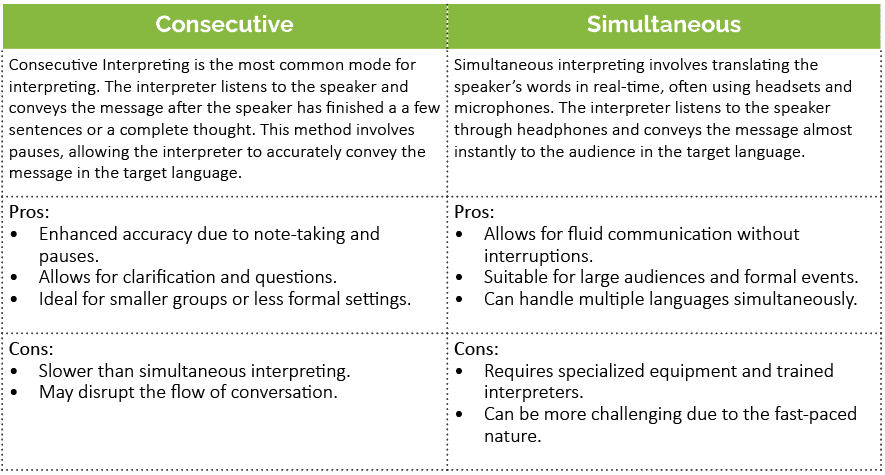Consecutive vs. Simultaneous Interpreting
Consecutive vs. Simultaneous Interpreting
Whether you’re in need of the thoughtful pacing of consecutive interpreting or the immediate responsiveness of simultaneous interpreting, each interpreting mode serves different needs and contexts, making it essential to understand their distinctions.

Where Each Mode is Effective
Conclusion
Both consecutive and simultaneous interpreting have their unique advantages and ideal use cases. Understanding these modes can help organizations choose the right interpreting style for their specific needs, ensuring effective communication across languages. Whether it’s a detailed discussion in a small meeting or a large international conference, the right interpretation method can significantly enhance understanding and collaboration.

